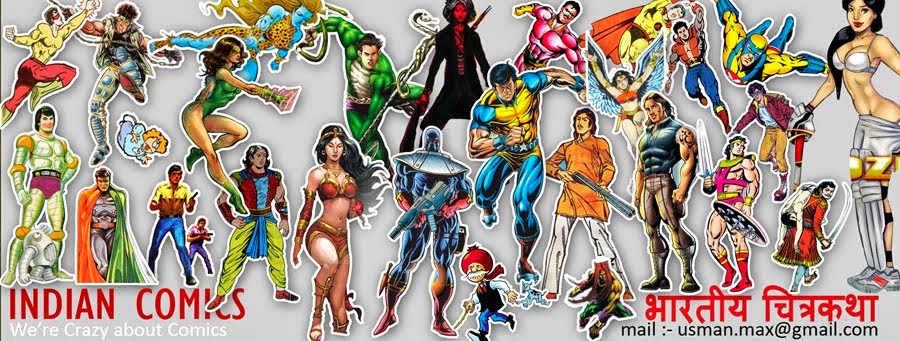Mythologies With a Modern Twist
Having dared to think out-of- the-box, a brave new breed of publishers have revamped the modern Indian comics by adding a zing to flat storytelling and zoomed in on lesser- known aspects of Indian mythologies, making new pop-culture icons out of age-old characters.
By September 27, 2013 at 1:07 PM

 1 of 5
1 of 5
Shiva is no longer just a god, nor Ravan a mere villain.
Having dared to think out-of-the-box, a brave new breed of publishers have revamped the modern Indian comics by adding a zing to flat storytelling and zoomed in on lesser-known aspects of Indian mythologies, making new pop-culture icons out of age-old characters.
Not only youngsters, but veteran comic book fans are lapping up the current trend, where mythological characters with contemporary twists are acquiring a swashbuckling superhero-like stature in a departure from folklore of yore imparting moral lessons.
“Well in India, many of the smaller and newer publishers are moving away from the traditional mythological and historical storylines to more contemporary content. Most are solely focusing on a much older and mature audience,” Jatin Varma, founder of Comic Con India, said. Comic Con annually brings together stakeholders in the field for an exposition and conferences.
With the advent of web comics and graphic novels, comics are now part of the mainstream.
Vivek Goel, whose Holy Cow Entertainment churns out the popular Aghori andRavanayan series of graphic novels, points out children are more likely to take to mythologies if there’s more to the story and deviating from stereotype helps.
“If you need youngsters, teens, adults to get hooked on to mythology then you need to upgrade the same with better quality art, a changed perspective and non-stereotypic cradle to grave stories. Give them a different perspective of the characters and they will love it,” Goel said.
“For example Ravanayan is the Ramayana story from its villain’s perspective and his personal journey to become the biggest villain Hindu mythology has ever witnessed. Ravanayan is Ravan’s personal life story before the abduction of Sita,” Goel explained, adding that Aghori delves into the outlandish world of the sect of ascetics that children rarely read about.
It is not just the rehashed script that attracts the super-hero loving youngsters accustomed to the bright tones and stylized content of western comics juggernauts like Marvel and DC.
Bold and gritty, the illustrations in themselves are tempting enough. A storyscape dominated by rich colors, sharp brush strokes and angular features to provide a 3D-like effect is a successful tool to sway the average “Avengers” fan to Shiva and Vishnu.
“Our art is more global and 3D oriented...it’s more stylish. We put more effort in the research on our art and colors,” said Karan Vir Arora, CEO/Visionary of Vimanika Comics that brings out the top-selling I am Kalki and Shiva-Legends of the Immortal series.
Moreover, weaving the age-old formula of triumph of good over evil into a contemporary backdrop is a powerful tool to woo readers, and Vimanika has done just that.
While Kalki, the 10th reincarnation of Lord Vishnu, is known to slay the demons of corruption in the original, in his new look, he is an ordinary teenager in a modern city who hunts down demons by night.
“From experimenting with colors, narratives, styles, to dealing with issues that concern society, feminism, sexuality, religion and the like, the world of comics is no longer defined the way it was even some years ago,” said Sreejita Bose of StripTease, the e-magazine on comics.
While novels and webcomics are “interesting and swift” portals to disseminate stories on Indian culture and heritage to children, exaggerations of characters might lead to development of skewed concepts of right and wrong.
“It is not possible in our busy schedule to tell them stories. So these media do help. But on the other hand if the characters are too bold or exaggerated then it confuses the kids about what is right or wrong,” said Suchismita Ray Paul, sociologist and assistant professor at the Jogmaya Devi College here.
“But they are the most important way to teach them about good over evil,” Paul added.








No comments:
Post a Comment